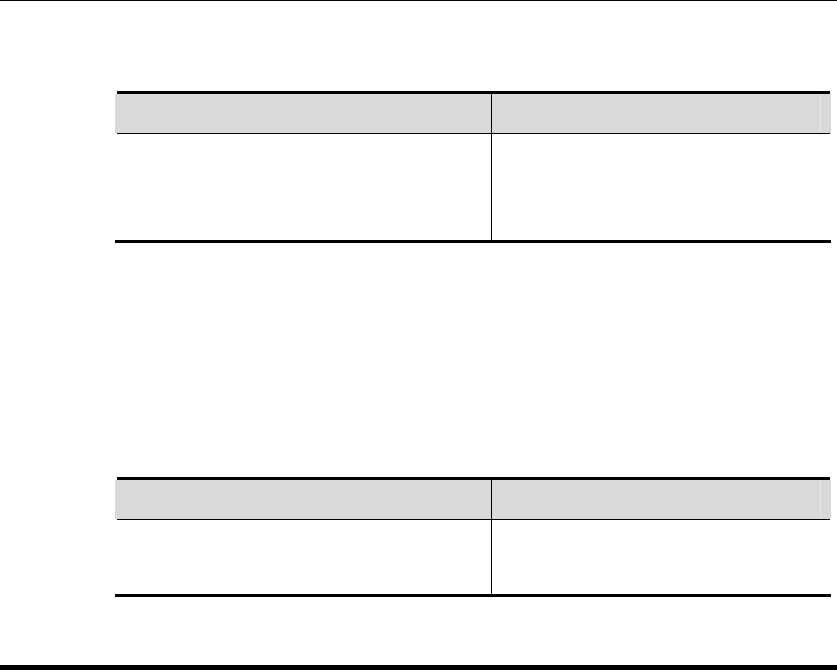
DES-7200 Configuration Guide Chapter 6 BGP
Configuration
6-24
To configure the cluster ID of the BGP, execute the following operations in the
BGP configuration mode:
Command Function
DES-7200(config-router)# bgp
cluster-id
cluster-id
(Optional) Configure the cluster ID
of the route reflector.
In general, it is not necessary to establish the connection relationship between
the clients of the route reflector within the cluster, and the route reflector will
reflect the routes among clients. However, if the full connection relationship is
established among all clients, this function can be disabled.
To disable the function of reflecting the routes of the client, execute the following
operations in the BGP configuration mode:
Command Function
DES-7200(config-router)# no bgp
client-to-client reflection
(Optional) Disable route reflection
on clients.
6.15 Configuring Route Flap Dampening for BGP
Route flap means a route changes between the valid status and the invalid status.
The route flap usually causes instable routes to be transmitted on the Internet,
and thus a instable network. The BGP route flap dampening is a measure to
reduce route flap by monitoring the route information of EBGP peers.
The route flap dampening of BGP uses the following glossaries:
Route Flap: A route changes between the valid status and the invalid status.
Penalty: The route flap dampening-enabled BGP Speakers will add a penalty
for the route every time when a route flaps. The penalty will be accumulated
to exceed the suppress limit.
Suppress Limit: When the penalty of a route exceeds this value, the route will
be suppressed.
Half-life-time: The time elapsed when the penalty is reduced to half of its
value.
Reuse Limit: When the penalty of the route is lower than this value, the route
suppression is released.
Max-suppress-time: The maximal time the route can be suppressed.
Brief description of route flap dampening: The BGP Speakers will add a penalty
for the route every time when a route flaps. The penalty is accumulated. Once the


















